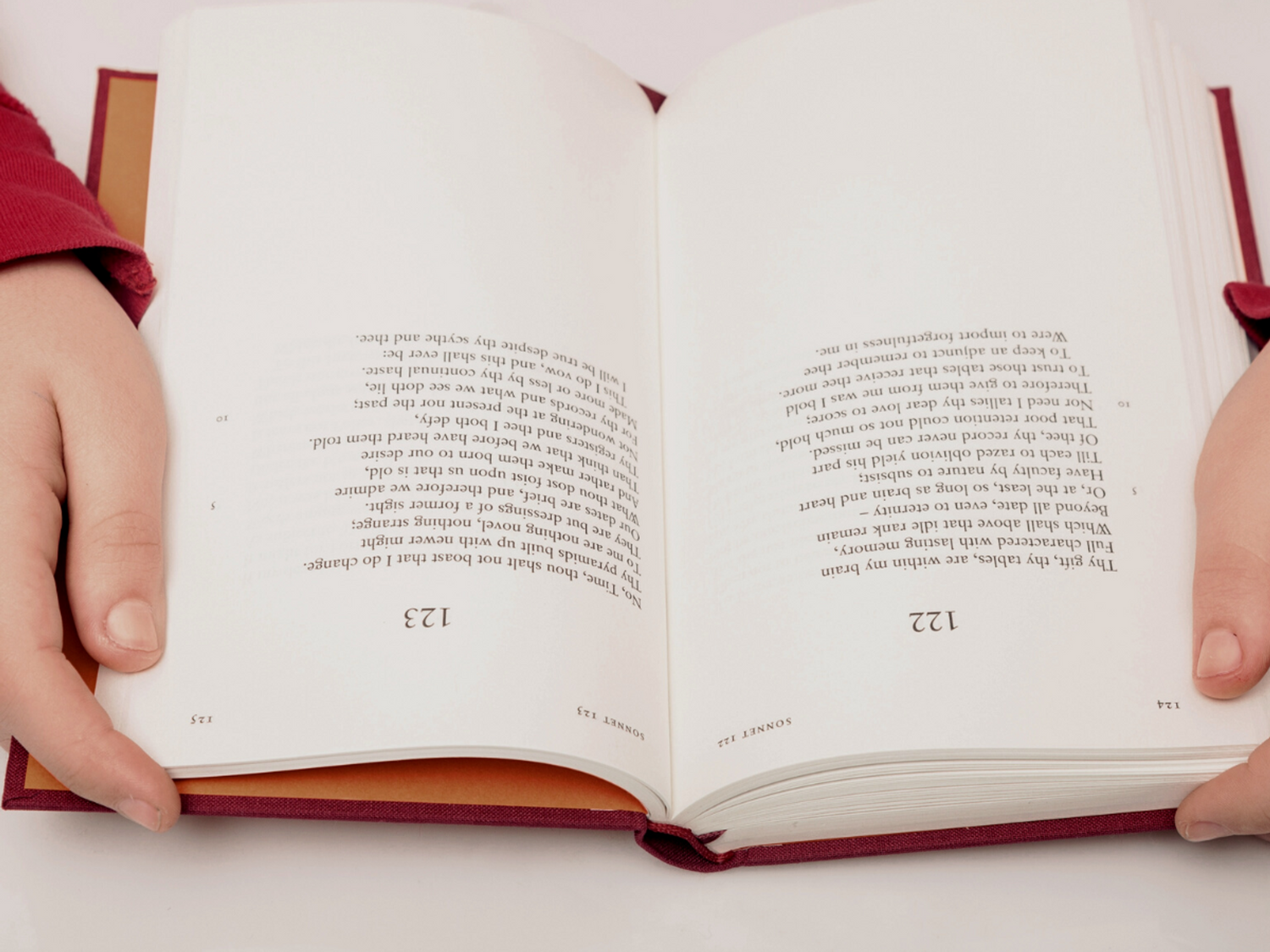From the very beginnings of language development in early years to critical analysis at GCSE or A-level, poetry follows learners through their academic journey. However, no matter their age, poetry can be one of the most difficult writing techniques to master, not just when creating it but when analysing it critically.
What is poetry?
A simple definition for poetry is literature which evokes an emotional response through form, sound, and rhythm. Some of the simplest forms of poetry, such as nursery rhymes, are arranged to make the reader entertained. Other more complex poems may make a heartfelt comment about life or explore something the poet experienced. Unlike most texts learners encounter in the classroom, poetry can be presented in hundreds of different ways, from the limerick to the canto, and each of these ways has particular rules. To introduce poetry to your learners, you can begin by presenting the characteristics of poetry:
- Rhythm: the use of sound patterns to create an effect. This means putting more stress or emphasis on certain syllables as you read. A poem’s rhythm is also called its meter. A famous example of rhythm is iambic pentameter, which Shakespeare often uses in his plays and sonnets. This means each line has ten syllables with a repeating rhythm of “da-dum da-dum da-dum da-dum da-dum”.
- Sound: choosing certain words to change the way a sentence sounds. An example of this is alliteration, where the same letter is used at the beginning of every word in a phrase or line. “Peter Piper picked a peck of pickled peppers” is a famous tongue twister which uses alliteration: the sound of the letter “p” is repeated six times.
- Imagery: describing what the narrator is seeing, hearing, or experiencing. Imagery intends to paint a picture in the mind of the reader through specific and vibrant language, to ensure they see exactly what the author wants them to see. Imagery is not simply about sight either: it can be used to appeal to any of the senses, such as smell or taste. An example of imagery is William Wordsworth’s description of “a crowd, a host, of golden daffodils” on a hill.
- Form: how the author arranges the words on a page. This is also the easiest way for younger learners to identify a poem, as they can see the structure on the page before they begin reading. Many poems are split into sections called stanzas, and often follow rules that decide their rhythm and rhyme. Sonnets, for example, follow strict rules for their syllables and rhythm, while other forms, such as free verse, often have very few rules.
- Figure of speech: describing things in a non-literal way, such as a simile or a hyperbole. The metaphor, where one thing is compared to something unfamiliar, is one of the most essential aspects of a poem, and you will be able to find many examples of this, such as the phrase “heart of gold” - the heart is not literally made of gold, but this figure of speech uses “gold” to attribute value to the heart, implying someone is a good person.
The sonnet “Shall I compare thee to a summer’s day?” by William Shakespeare contains all five of these characteristics. We see rhythm and sound in his use of iambic pentameter, and the love interest is described through the imagery and metaphor of a summer’s day. The chosen form is the sonnet, which is 14 lines long with 10 syllables per line.
How can poetry help to develop literacy skills in primary learners?
Poetry is an excellent way to stimulate the imagination of your learners. When they are learning to read and write poetry, they are gaining metacognitive skills that are vital for any reading or writing task. This means that poetry in the classroom can be essential for children to understand the details of language, as well as making the process of reading more fun. As your learners begin to think deeply about phonetic sounds and inflection, they can begin to master the spoken word on top of their writing skills.
One of the most difficult aspects of improving literacy can be encouraging a younger learner to read. When learners are already struggling readers, the increasing complexity of books and textbooks can be discouraging. Poetry can be one of the ways to introduce a reluctant reader to the enjoyment of words: poetry is short, usually less than a page long, and poems aimed at younger audiences are often humorous and easy to understand. This can make reading less daunting as, unlike a novel, the average poem can be finished in a single sitting.
Additionally, poems are filled with important literary elements in a much smaller space, which can help learners catch up to those who already enjoy the process of reading.
Builds their vocabulary skills
Like other forms of reading, poetry introduces learners to new vocabulary. However, one important difference is that poetry often follows strict rules of rhythm and form. This limitation often means that poets need to choose specific words or place them into new contexts to rhyme or fit a meter. As a result, learners can discover new contexts in which to use their vocabulary and transfer these fresh connections within their own work.
In some poems, the use of rhyme can place more complicated words with those a learner will already recognise. For example, rhyming “squeak” with “meek” creates a relationship between a known word and the new vocabulary. Words that rhyme are often much easier to remember, so discovering vocabulary in these contexts means a learner is more likely to bring the new words into their own writing.
These new contexts can help learners be more creative in their writing, too, as they discover new ways to present their thoughts and ideas. One of the unique aspects of poetry is that it can follow very strict rules, but sometimes it can follow almost none. Allowing your learners this freedom to explore language can be vital for their understanding of it, as poetry gives them the space to discover rhyme, rhythm, and new relationships between words.
Each of these skills can be applied to other forms of writing, allowing learners’ work to become more engaging and exciting to read. For older learners, you could ask them to find poetic devices within other writing, such as their favourite books or songs.
Improves oracy skills
One of the most important skills for learners is their ability to speak aloud, and reading poetry can be vital for their oral development.
As learners read a poem aloud, they begin to pay more attention to the sounds of words and how meaning can change depending on how a line is spoken. Unlike some other reading exercises, the rhythm and rhyme of poetry are fun for children to say, and this encourages them to enjoy speaking in front of a class.
Encouraging learners’ confidence when reading aloud can motivate them to seek out poems on their own and, as they begin to read out loud more, their speech development often improves dramatically.
Different types of poems can aid in the fluency of each learner: some poems, such as limericks, need to be said in a certain way, as they rely on stress and meter. Other poems, such as free verse, ask learners to be more creative as they read out loud, as these poems often do not use an exact rhythm or meter.
When teaching these poems, allow your learners to have fun reading them out loud, and see if they can discover new meanings as they play with inflection and emphasis.

Scaffolded GCSE English questions to support literacy progress.
Explore vocabulary, grammar and GCSE instruction, supercharged by a unique deep-learning algorithm.
What to keep in mind when teaching poetry to younger learners
Many younger learners can find poetry difficult to understand when it is first introduced in the classroom. Poems can be packed with literary devices, complex vocabulary, and complicated imagery which is significantly different from other writing styles they have encountered. As such, it is crucial to make poetry both fun and accessible, as it can be an essential way of teaching difficult vocabulary and helping learners memorise it.
Get learners involved
An important way to help learners understand poems is to have them write their own definitions of poetry.
You could start by bringing in three or four example poems to the classroom; these poems could be well-known, such as the work of Edward Lear or Lewis Carroll, or more modern humourous poems. Once the class has heard them and had a chance to say them out loud, ask them to write down what a poem is, before providing your own definition. These definitions do not have to be correct, but they provide a space for your learners to think deeply about what they have heard and begin to discover what makes poetry unique from other forms of writing.
When your learners are confident about what a poem is, you can ask them to bring in examples of their favourite poems. These could be nursery rhymes or more complicated poetry, such as the children’s poems of Rudyard Kipling. Ask your learners to read these poems out loud, then try and find out what the similarities and differences are between each of them, from subject to sound.
To develop this further, you could ask older learners to bring in the lyrics of songs they enjoy. Ask them to think critically about the differences between song lyrics and poetry (should there be any!)
The importance of background knowledge
Once learners fully understand the building blocks of poetry, you can begin to introduce background knowledge of the authors. Some poems, such as limericks and nonsense poetry, do not require any knowledge of the writer to understand and enjoy.
However, as poetry becomes more complex, it becomes vital to know the background of a poet to fully understand the contents of their poems. Poets such as Wilfred Owen and Maya Angelou, for example, write poetry in the context of their socioeconomic background, which learners must know to comprehend their work.
This exploration of context can help learners recognise the different uses of language, and how their poetic choices relate to experiences of war or race. This can also help explain the different ways language is used across time periods, from the 16th-century sonnets of Shakespeare to the poetry of Siegfried Sassoon during the First World War.
With this in mind, you should select the right poems to introduce to your class. Some contexts can be too complicated for younger learners, while some older learners might find limericks or rhymes too simple. Learners should be introduced to poetry with strong rhythm and form, giving them an understanding and enjoyment of poetry, before moving on to more complex poetic styles.
As they progress through education, however, you can begin to explore more complicated ideas within poems and ask your class what happened in history that inspired an author to write about it, making links to socioeconomic context and developing cultural capital. Every poem can benefit your learners when exploring how language works; as the poetry becomes more complex, your learners will gain more confidence when talking about poetic devices, as well as when they use them within their creative work.
Teaching poetry to primary learners
A great way to teach poetry to primary-age learners is to read poems aloud and ask learners to repeat the poem back to you - or read the poem together as a class. For younger learners, this helps to scaffold how tone can affect language, and repeating humorous poems in the classroom can be very fun.
As they repeat words and lines back to you, they will begin to learn about stresses, syllables, and vocal intonation, all of which are essential when communicating information in any spoken form. Each of these can then be used when reading out their favourite poems, and when reading out the poems that they have written themselves. This develops a culture of enjoying reading poetry, which will benefit them as the poetry they encounter becomes increasingly complex.
It is also important to create a space in which your class can ask questions about a poem. Especially for younger learners, some may find the new forms of writing and language difficult to comprehend at first. As poetry is often directly related to speaking and performance, some more quiet learners may find these classes most difficult, not only when speaking aloud but also when sharing aspects of the poem they don’t understand. This means creating a space for questions is essential when ascertaining how well a particular poem is understood by your learners. Ask your learners to identify rhyming words, identify imagery and metaphors, and speak openly about meanings they don’t quite get. This ensures no learner is left behind.
During each class, you can begin to introduce new poetic devices, and then provide examples within poems that reveal how these devices work. Fundamental poetic devices such as figurative language, form and rhyming form the basis of poetry from the simplest nursery rhymes to lengthy Romantic epics, so it is vital for learners to have a full understanding of the building blocks that make poems work.
Many of these devices can be illustrated simply, and this allows you to bring in examples from popular poems, as well as create your own. You could also encourage learners to come to the front of the class and provide their own examples, and explain their similes, metaphors, or hyperboles to the rest of the class. This gives them a chance to be both creative and confident when standing in front of their peers.
A great way to find out how well a learner understands poetry is to ask them to write their own. After introducing a new form, ask your learners to write a poem which utilises it, such as a limerick or a sonnet. This provides an opportunity for learners to ask questions, as well as demonstrate their understanding of poetic devices.
Creative writing can be one of the most enjoyable parts of education, as gives learners the freedom to write about whatever topics they are interested in, and encourages them to play with rhythm, rhyme, and new vocabulary. Once they have learned how to write poetry, they will begin to bring these techniques into other types of writing, making all of their work more complex and more vibrant.
How Bedrock uses poetry to improve literacy development
Improving literacy means supporting learners’ language development throughout their academic careers. Not only does this involve expanding their vocabulary and grammar skills, but also reinforces their knowledge of writing devices. That’s why Bedrock’s core curriculum features an intelligent digital GCSE English curriculum, using examples from classic texts and the deep-learning algorithm to strengthen learners’ understanding of poetic devices.
Through multiple-choice questions, writing activities, gamified tasks and high-quality prose, learners explore and master the fundamental writing devices they need to thrive in GCSE English, both when analysing texts and when using writing techniques in their own writing.
The skills they strengthen are compiled in each learner’s unique knowledge organiser, forming a revision tool that expands over time. Knowledge is retained through regular algorithm-driven recap activities, boosting learners’ progress.
Available for both classroom and home learning, GCSE English forms an essential component of Bedrock’s core curriculum, helping to drive up learners’ literacy attainment from all angles.




